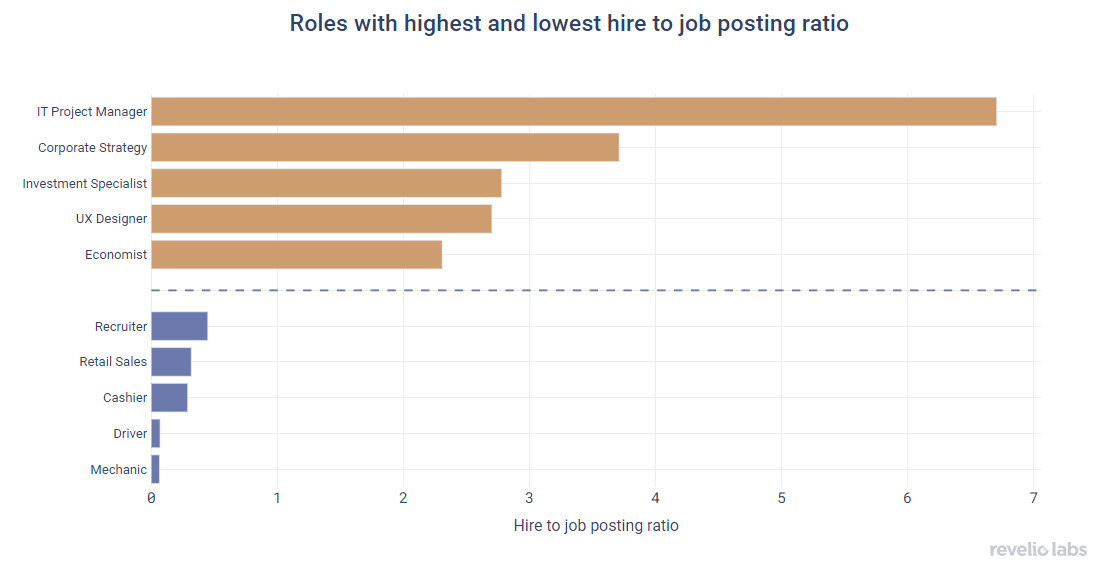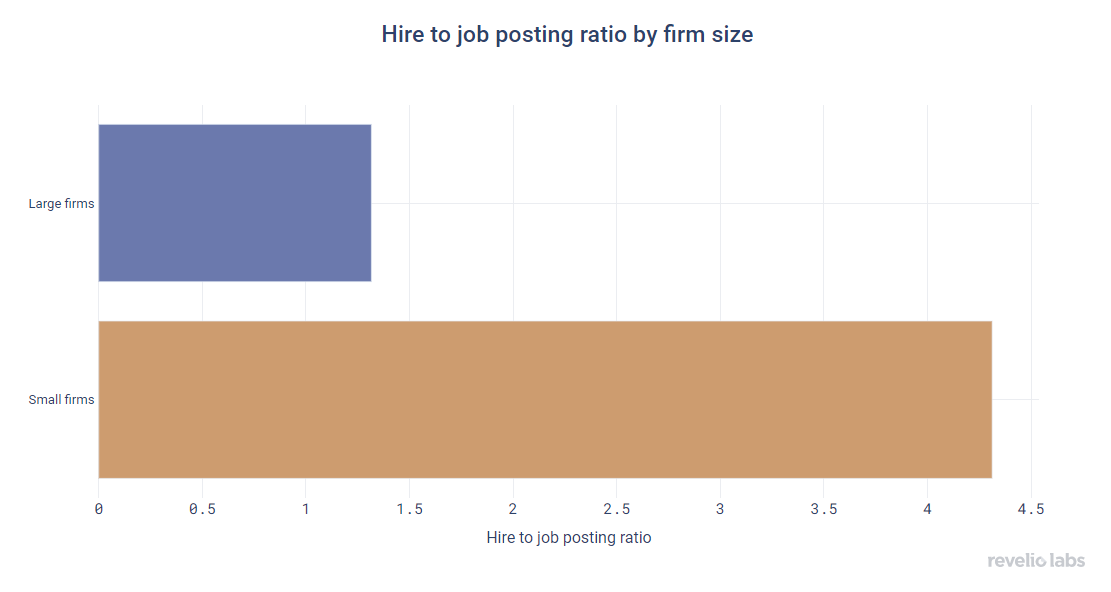
Job postings are often used to measure demand in the economy. But does one job posting really represent one vacancy? And does a removed posting really represent a hire? Or, alternatively, are there roles where there is no posting but still a new hire? Or are there roles with postings but no talent to fill those roles? In short, what is the relationship of job postings to hires?
By comparing job postings with new hires for the second half of 2021, we can see which roles have the biggest discrepancies between new hires and job openings. Below is their “hire to job posting” ratio:

The graph suggests that for every IT Project Manager job posting, close to seven new positions are actually filled. These jobs are relatively rare to be posted online and individuals need to rely on word-of-mouth or connections to secure them. The bottom part of the graph, however, are the roles in which job postings far exceed observed new hires. The occupations in that list remind us of two phenomena in the labor market: (i) the recent astronomic demand for recruiters; and (ii) the low hires to vacancy ratios for drivers, mechanics, and cashiers, which are an indication of labor shortages for these roles.
While one may be tempted to think that this is a question of company size – in the sense that larger companies post one job, but actually hire many new workers for a role – we find that the opposite is true.

Larger companies’ “hire to job posting” ratio is closer to 1, while it is much higher for smaller companies. Arguably, this is related to the fact that larger firms need to plan ahead and maybe have more rigid budgets, while smaller firms may be more flexible in their hiring practices.
Key Takeaways:
To learn more about the data behind this article and what Revelio Labs has to offer, visit https://www.reveliolabs.com/.







Sign up to receive our stories in your inbox.
Data is changing the speed of business. Investors, Corporations, and Governments are buying new, differentiated data to gain visibility make better decisions. Don't fall behind. Let us help.













Sign up to receive our stories in your inbox.
Data is changing the speed of business. Investors, Corporations, and Governments are buying new, differentiated data to gain visibility make better decisions. Don't fall behind. Let us help.





